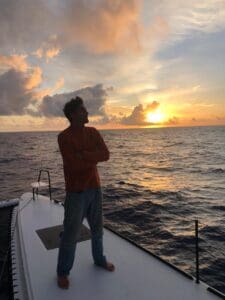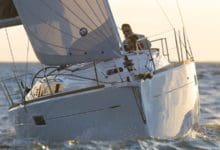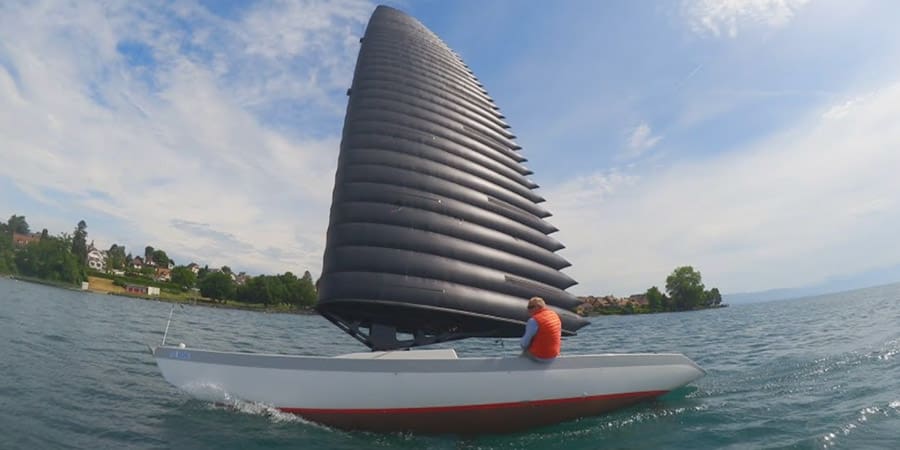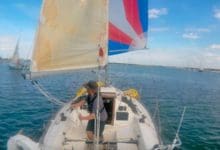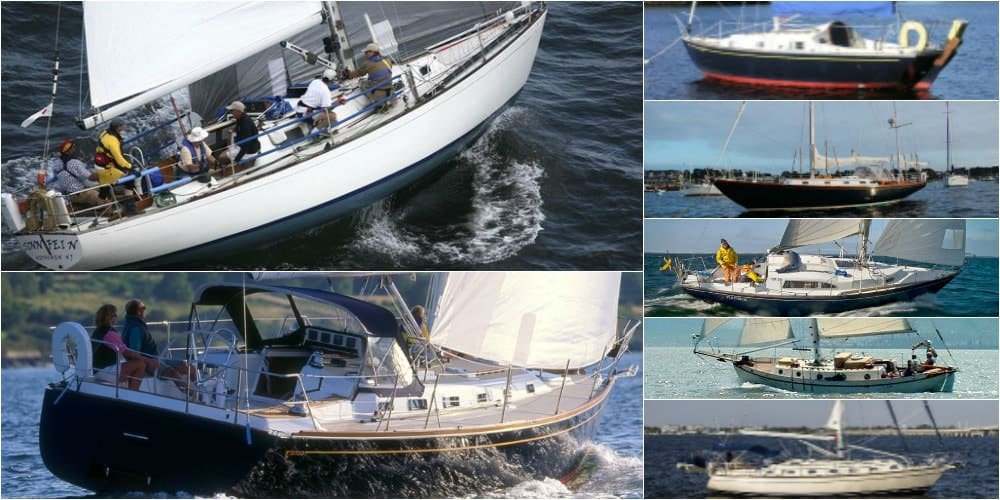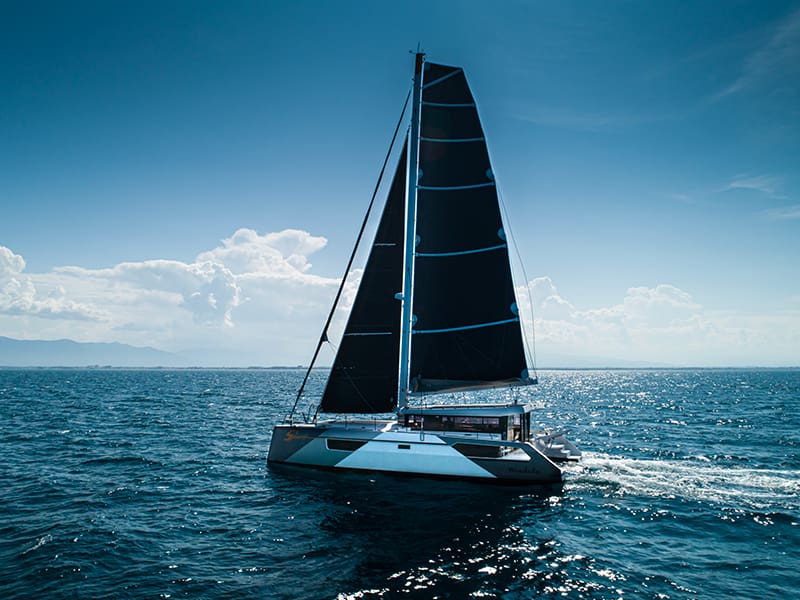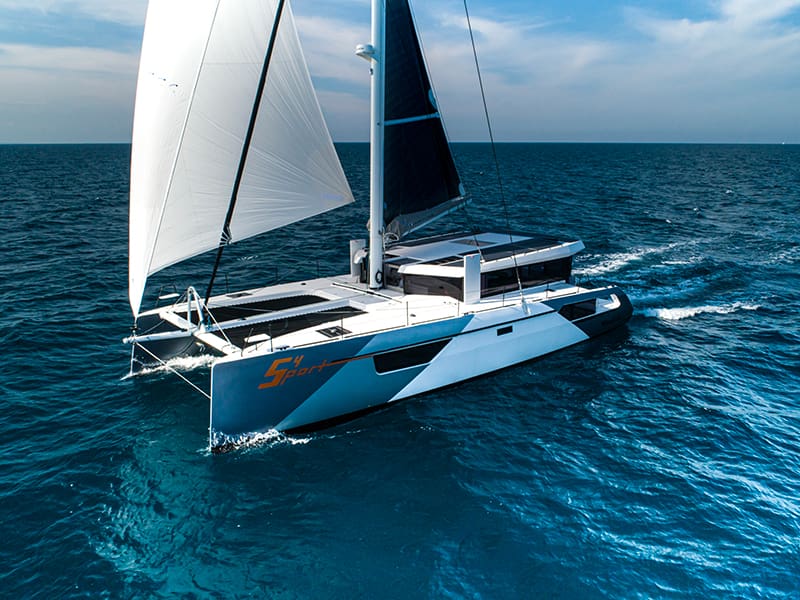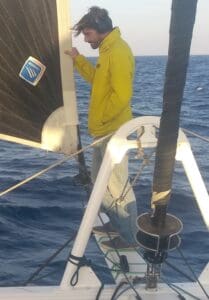A Skipper’s Insight into the Windelo 54 Sport’s Transatlantic Success
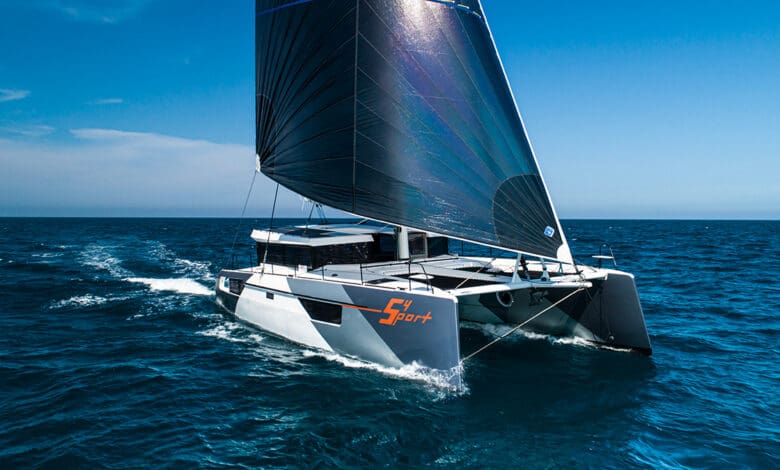
What is the best endorsement you can have of a vessel? Isn’t it the positive testimonial of an owner or a professional skipper who were sailing for almost a year?
Jean-Marie Poujat is the skipper of HM, a Windelo 54 Sport. He is just back from a season in the Caribbean which took in two transatlantic crossings; heading out west via the Canaries and returning via the Azores for a technical stopover at Windelo’s base at Canet en Roussillon. He was therefore in the ideal position to give his assessment of the boat and his adventure when we caught up with him.
Jean-Marie, tell us a bit about yourself and how you got into sailing
I was born in Concarneau, in Finistère, Brittany, facing les Îles de Glénan. It’s a famous place for sailing, with a long history of sailing and racing. I started sailing at a very young age because in kindergarten we were already sailing; It was kind of a must. My parents had boats before I was born in the cradle I was already in the bottom of a boat. When I was 14, I became a sailing instructor, and at 15, my parents gave me keys to the boat. I used to take the boat out with my friends when my parents didn’t need it. It means that I’ve been confident and able to handle a boat alone for a long time now.
After completing my studies I returned to boating but on the manufacturing side. I worked for Beneteau and Marsaudon Composites, which also made Catanas at the time. And then I thought it would be nice to get back out to sea so I took my Master 200 in sailing. As soon as I had it, I bought a yacht and set off for the Caribbean. I did a bit of everything; chartering, day trips, motorboating, speedboats – you name it. Pre-Covid, I worked for Dream Yacht Charter and I did all their boat repatriations and all their new boat deliveries. I covered the area between Puerto Rico to the north and Grenada to the south.
You just come back from two Atlantic crossing on a Windelo, how was it? How would you compare it to another boat?
What’s impressive is the speed; you sail at an average of 8 knots on a standard cruising yacht. When you’re doing 8 knots on the Windelo, it feels like you’re standing still. In 2001, I sailed aboard Catherine Chabaud’s Whirlpool [A Vendee Globe racing yacht], with her team on a delivery. Back then, we were amazed at doing 12 knots in a 15-knot wind. With the Windelo, it feels like I’m sailing a luxury cruiser at the speed we had 25 years ago on racing yachts – that’s pretty awesome. We succeeded in exceeding 250 nautical miles in one day and on the return trip it took me less time to sail from Guadeloupe to the Azores than it did to sail from Cape Verde to Guadeloupe. The distance is roughly the same but the difference is that heading back east to the Azores you’re generally going upwind meanwhile, heading west it’s downwind. So to sail faster on the upwind leg was quite something – it was a great performance. The trick is that if you adjust the trim little on the Windelo… If you’re not too downwind on the beam, you can decrease the apparent wind angle and with 10 knots wind speed, you can average 10 knots and that’s quite exceptional on a cruising yacht.
How did your life on board during your crossing go? There were two of you on board. Tell us more about it
Originally, I was ready to do a transatlantic crossing on my own but, for safety and insurance reasons, you can’t. So I took a friend with me – a bit of a sailor but mostly a cook. I handled the boat on my own, and I ate well because there was a cook on board. So, in a way, I sailed the transatlantic alone, but with someone onboard, so as not to feel alone, and that’s a good solution, if there were problems, he helped. At the same time, there was no housekeeping for me on top of managing the boat and that balance really was ideal. I was able to push the boat hard all the way across the Atlantic with someone doing all the things I didn’t have time to do. So it was great.
For the life onboard, when there are two of you, you each have a hull. So, you’ve got a shower, your own toilet, and two cabins each! Life is really relaxed. The boat is incredibly well equipped.
And what about the forward cockpit?
I love it. There’s nothing better for sailing. You don’t have to be outside, you’re not exposed to the elements, and you can enjoy life onboard. If anything happens you can see everything from the cockpit and it feels like a racing boat. You can manage the boat by yourself, even racing, use several forward sails, and the electric winches are really wonderful. I’ll never go back to a catamaran with a flybridge or even one with twin helms outboard. That’s good for a 24 hour racing session, but no more. When you spend 25 days at sea, you really value not getting wet, not being in the wind, and not having to stay outside. Otherwise it’s punishing to be the person at the helm, staying close to the sheets and so on. On the Windelo, everything’s close at hand. You also have a view that you don’t have on other catamarans. You’re not a bus driver, but you’re still behind a big windshield with a panoramic view! That’s great.
So, what were the conditions like during your crossing?
The outgoing trip was tough. When we left Gibraltar, we initially wanted to go to Madeira but the weather got complicated. We had to reroute to the Canaries, and were forced to pass through a weather front to the south-west of Portugal where we hit a steady 40 knots wind for four hours followed by an hour with 50 plus knots plus five meter swells that we were punching upwind into. So the boat is strong – I’ve tested it and it’s good – but it was quite hard going. After that, we had some strong trade winds. We had between 25 and 30 knots all the time. With a full gennaker and two reefs in the mainsail, the boat went well.
And for the trip back?
The return trip was very good indeed. We had very little wind over 10 or 15 knots, which is how things work best for me, like on a lot of boats. We frequently sailed 220 nautical miles a day, sometimes 250. That’s quite exceptional on a cruising yacht – exceeding 200 miles a day, means that it’s a good boat. On the way back, just two days from the Azores, we overtook a Route du Rhum Class 40 on its way back from Martinique. There were four racers on board and we were gaining an average of 1 ½ knots on them per hour. They were really racing, with a weather router, and everything. We just had Windy, and basic weather lore so I’m delighted that we outran them. It was a monohull but nonetheless, it’s a Route du Rhum racer.
We ran through the Strait of Gibraltar at an average of 12 knots, in the middle of cargo ships which are limited to 12 knots going through the Strait. So at 12.5 knots, we were faster than the cargo vessels. I’m not used to that as a sailor, so that was fabulous too. In the Med, sailing was great. We were alone, with dolphins and it was sunny – really nice.
I was really happy with my transatlantic voyage.
It was your first time sailing a boat with electric motors. How did you feel about it, what was the difference?
It’s the total opposite of your typical boat. If your batteries are low on a normal boat, you start the engines. On the Windelo, it’s the opposite. This is a bit of a paradox, because it’s the reflex we’ve always had – but it’s nice, because you don’t have all those noises or smells. I like it. In terms of handling it has a lot of torque, so good for maneuvering. Of course, the aim of a performance bluewater catamaran is not to use the engines, especially when you’ve got a multihull that can make good headway in light winds since you’re still doing 80 – 90% of the wind speed. It also encourages you not to use engines.
How about power management when at anchor in, say, the West indies?
We were always at anchor in the West Indies and didn’t put it to the marinas. It’s the tropics, there’s no point – we were completely autonomous when it came to power. Another bonus when it came to anchoring is that the boat has a shallow draft, you can take her places no one goes. Because a draft of 1.1 meter for a 16-meter boat is quite exceptional. It’s more like the draft of a 40-foot catamaran. That’s less than the Lagoon 380 – her draft is 1.2 m.
During charter, when you have 6 to 8 people aboard, how do things work aboard the boat? What do people think about the space and the boat?
They love it. When you’re aboard, you feel like you’re in a villa. The cabins with their huge windows are wonderful. You’re in bed, you wake up in the tropics with turquoise-colored water, you open the curtain… and it outstrips all the villas in the world. What’s more, you move every day.
Guests also loved the equipment on board. Dishwasher, washing machine if they need it, oven, induction hob, and all that. It’s wonderful for them. They don’t feel like they’re sailing like we used to on 50-foot boats. People also loved the outdoor seating area aft. At anchorage, it creates a flush deck and kids loved jumping from it into the sea.
As a crew member, one thing I like is that you have one bathroom per hull, rather than four cabins with their own bathroom. For us, there’s less housekeeping to do.
Moving on to a slightly different subject, you arrived at the Windelo boatyard two days ago. How do you find the services?
Good. I made arrangements with Pierre and Stéphane from Windelo prior to arrival and, as soon as I got there, there was already a place ready for my three days stopover. Everything was planned out and the team was responsive. I still have one more day at dock, and nearly everything we wanted sorted is done. It’s a pleasure to work with professionals happy to help.

